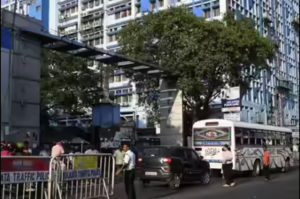Victim Kin Demand Justice — In a significant development in the high-profile R.G. Kar medical college rape-murder case, the parents of the victim have petitioned the Sealdah court seeking permission for their legal team to visit the hospital premises—an effort motivated by concerns over the authenticity of crime scene evidence.
Why the Hospital Visit Matters
The victim’s family argues that photographs and videos submitted to the court do not accurately convey the nuances of the crime scene. Their aim is to gain a direct and unfiltered understanding of the location where the incident occurred, ensuring that nothing vital is overlooked.
Phil Litigator Phiroze Edulji, representing the family, stated:
“Photos and videos may not give a clear picture of the rooms and the place of occurrence.”
Their plea emphasizes the role private counsel can play in bridging gaps in the official investigation.
Victim Kin Demand Justice: Court Orders and Proceedings
- High Court Directive: The Calcutta High Court recently directed the family to approach the trial court, as Supreme Court intervention was deemed premature at this stage.
- Presenting before Sealdah Court: On July 8, the family appeared before the trial court. Both former principal Sandip Ghosh and ex-Tallah PS OC Abhijit Mandal—named in the case—were also present.
- State’s Position: The state’s legal team opposed the visit, citing a lack of legal provision supporting such access.
- Neutral Stance: Ghosh’s lawyer indicated he would not resist the court’s final decision.
- Pending Judgement: The court has reserved its order, expected to be announced soon.
Legal Backdrop: Hosting a Crime Scene Visit
Case law in India provides for controlled visits to crime scenes by legal representatives under the supervision of judicial authorities. The rationale includes:
- Ensuring the defence and prosecution have equal access to the environment.
- Preserving procedural transparency and preventing contamination of evidence.
- Clarifying ambiguities that still images or footage cannot convey.
Although infrequently utilized, such measures reflect the judiciary’s flexibility in upholding fair trial standards.
External References:
- Legal texts on criminal procedure and defence rights
- Court rulings on site visits in criminal investigations
Broader Significance
- Trust in Investigations: The family’s demand underscores continuing concerns over potential lapses in the official forensic process. Earlier irregularities—such as delays in informing the police—had already strained public confidence.
- Judicial Oversight: By ordering the petition to the trial court, the judiciary is balancing the need for procedural fairness with legal propriety.
- Role of Legal Teams: Courts increasingly recognize private counsel as essential in spotting investigative oversights and advocating for additional measures.


Relevant Government Internal Links:
-
🔗 National Legal Services Authority (NALSA) – Victim Compensation Scheme Guidelines
→ For understanding legal rights of victims and their families in ongoing cases. -
🔗 Ministry of Home Affairs – Crime Scene Management Guidelines (BPRD)
→ Comprehensive government manual on how crime scenes should be documented and preserved. -
🔗 National Crime Records Bureau (NCRB) – Annual Crime in India Reports
→ For official data on similar gender-based violence cases and investigation timelines. -
🔗 eCourts Services – Case Status & Filing Details
→ To track the progress of this case or similar criminal cases in Sealdah or Calcutta courts. -
🔗 Ministry of Law and Justice – Constitution of India (Article 21)
→ Article 21 guarantees the right to life and personal liberty, forming the legal backbone for a fair trial and the family’s demand for justice.
What to Expect
If approved, the court-controlled visit will likely include:
- Legal teams inspecting the semin ar hall and adjacent rooms.
- Preservation of scene integrity by controlling reunions with prior investigators.
- Documentation (notes/sketches) to complement official evidence.
- Consideration of expert testimony on crime scene layout and evidence placement.
Upon completion, the court is expected to issue further directions—potentially mandating re-examination of evidence, expert analysis, or additional procedural safeguards.
Final Take
This petition adds a new dimension to a case already fraught with procedural scrutiny and deep public concern. The family’s move symbolizes broader calls for transparency and thoroughness in criminal investigations, especially sensitive ones involving gender-based violence. The upcoming court decision will set a crucial precedent for victim-led engagement and judicial openness in high-stakes cases.
Also read: Home | Channel 6 Network – Latest News, Breaking Updates: Politics, Business, Tech & More


